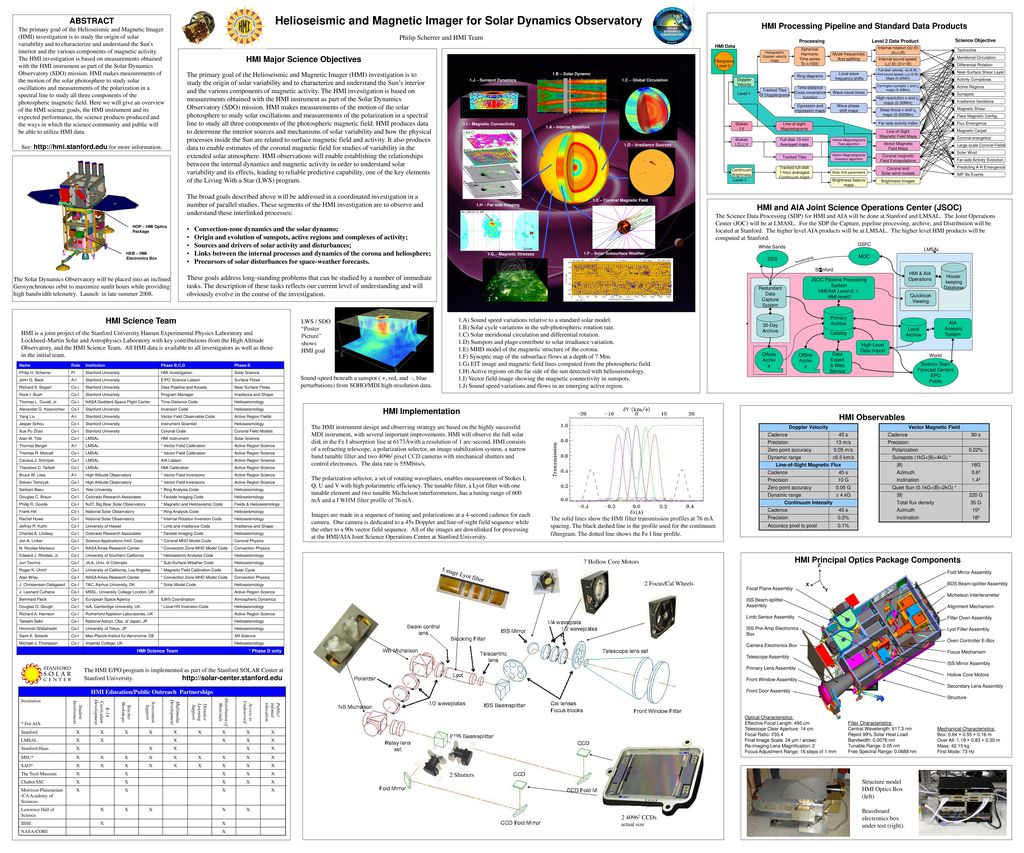The Helioseismic and Magnetic Imager (HMI) is a scientific instrument aboard the Solar Dynamics Observatory (SDO), launched on February 11, 2010. The instrument images the Sun’s interior and magnetic field. The data from HMI are used to understand how the Sun’s magnetic field is generated and how this energy is transported outward into the heliosphere.
HMI consists of two telescopes, which image the Sun in polarized light at six different wavelengths simultaneously. The light from each telescope is split into four beams by dichroic filters; three of these beams are sent to Charge-Coupled Device (CCD) detectors, while the fourth beam passes through a polarization modulator before reaching its CCD detector. This fourth beam provides information about the state of polarization of the incoming light, which can be used to infer the vector magnetic field strength and direction at each point on the solar surface.
The six wavelength bands observed by HMI span a wide range of temperatures in the solar photosphere: from 1 MK (million Kelvin) in the near-infrared bandpasses, down to 0.1 MK in one of the ultraviolet bandpasses. This allows us to probe different layers of solar activity: from deep within sunspots where strong magnetic fields inhibit convective motions, up to regions above sunspots where reconnection events between oppositely directed magnetic fields heat plasma to X-ray emitting temperatures.
Solar oscillations provide another key observable for HMI: acoustic waves that propagate through the Sun’s interior and reflect off its surface back towards us. By tracking these waves as they travel across active regions on the solar surface, we can map out features hidden beneath – much like medical ultrasound or seismic tomography here on Earth. These oscillations also carry information about conditions deep inside the Sun: by measuring their frequencies very precisely, we can infer properties such as temperature and density as a function of depth below the surface


